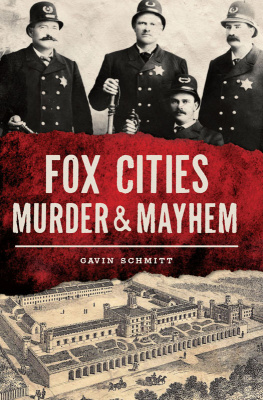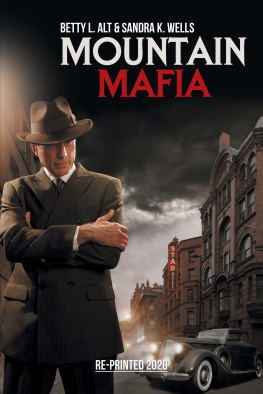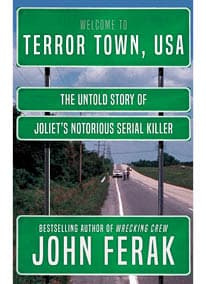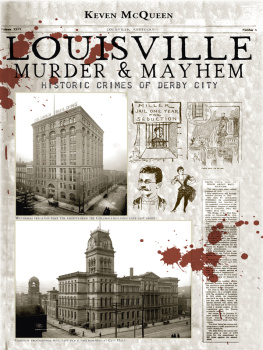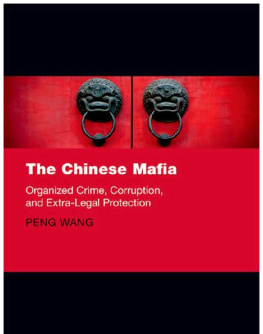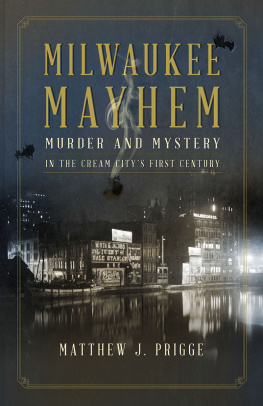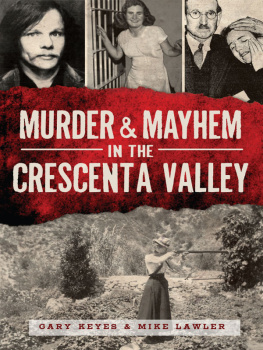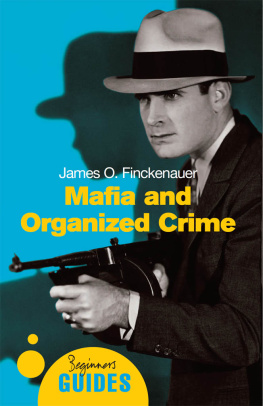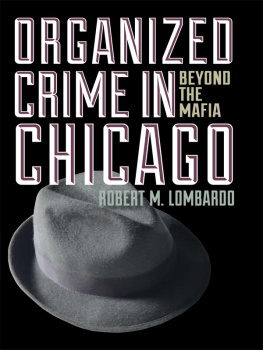


Published by The History Press
Charleston, SC
www.historypress.net
Copyright 2017 by Gavin Schmitt
All rights reserved
Front cover, top: Lyle Hansen; bottom: authors collection.
First published 2017
e-book edition 2017
ISBN 978.1.43966.378.3
Library of Congress Control Number: 2017948492
print edition ISBN 978.1.46713.869.7
Notice: The information in this book is true and complete to the best of our knowledge. It is offered without guarantee on the part of the author or The History Press. The author and The History Press disclaim all liability in connection with the use of this book.
All rights reserved. No part of this book may be reproduced or transmitted in any form whatsoever without prior written permission from the publisher except in the case of brief quotations embodied in critical articles and reviews.
CONTENTS
ACKNOWLEDGEMENTS
Thank you to The History Press, for taking a chance on me. One only hopes you made the right decision. Thank you, also, to the readers who have kept me on this path the last several years. Really, the hustle of the author life has been living the dream. I cant thank you all enough.
Some stories in this book were originally developed by myself twenty years ago but never published until now. Thank you to the librarians who allowed me all the endless hours on the microfilm reader in the years before most of the articles were available online. Also, thanks to the anonymous diligent reporters (long since dead) who provided the source material.
When compiling this book, a few people came forward with new stories I had not previously known about. I was pointed toward the George Hammer case early on. The Blazing Stump has been a research request from readers for a few years now. How I first heard of the Appleton Butcher I dont recall, but Im sure it was from someone who knew the incident would spark my interest.
Last, but not least, thanks to my brother Andy, whose love of history enriches my own. Over and over again, he has had me look into things I didnt even know I was interested in. Vice is my wheelhouse, but hes invited me into his (local breweries). Every now and then, the two collide.
A NOTE ON SOURCES
The stories covered in Fox Cities Murder & Mayhem have not appeared in any previous publication to my knowledge. Therefore, the source material is primarily newspaper articles written by uncredited journalists in Appleton, Kaukauna, Neenah and beyond. The stories were fleshed out through the use of biographical and genealogical sources: census records, death certificates, military draft registrations and so on.
In addition, some of the material in the chapter on Frances Webb comes from the parole files of Fred Runde, which are available from the State Historical Society of Wisconsin. Special thanks to Jane Lang and the Neenah Historical Society for providing a copy of these records and saving me a trip to Madison.
Lastly, while the skeleton of the Appleton Butcher story is from news reports filed by Bill Knudson, the real flesh of the story comes from the police report itself. My thanks to Mary Schmeichel and the Appleton Police Department for providing me with a copy. Despite some minor redactions for the protection of medical privacy, the document was a wealth of information and a genuine page-turner.
INTRODUCTION
I know what you must be thinking on picking up this book for the first time: the Fox Cities are not known for their murder and mayhem. And youre absolutely right. For the most part, the series of small towns that make up the region are some of the safest places in America and great places to raise a family. So, why does this book exist?
Beyond my own interest in dark history, I think the book offers a look at the community in a way we rarely think of it. We arent aware that brothels were common and operated more or less on an open basis, free from police interference. We think of the past as the good old days, but some of the most sensational crimes in local history took place long ago, not last week. And who knew that the Chinese community was thriving (albeit small) in various cities throughout northeast Wisconsin before the 1900s?
Now these stories will be told, for the first time in book form and in greater detail than newspapers allowed. History is history, whether good or bad. Rather than romanticize the past and build up our ancestors into untouchable idols, let us instead embrace the far more interesting truth. Humanity has always been populated by imperfect miscreantsand always will be.
One final thought: part of what makes a hero is a villain to overcome. Although the focus here may be on the villains, let us not overlook the unsung heroes in each storythe police, the judges and even the newspapermen who shone light into the shadows.
THE INTEMPERATE MURDER OF MAGDALENA HESSE
Our first story is one of crumbling marital relationships and the thriving temperance movement in Neenah during the 1870s. Whether or not alcohol was entirely to blame, the demon drink was certainly a factor in the lives of the Hesse family.
Magdalena Friese Hesse was born in Hanover, Germany, around 1834 and came to the United States around 1849. Some time was spent in both New York and Boston; in the former, she married and had two children, but this attempt at a family was a tragic affair. Both children died young, and her husband was a drunkard, leading to a quick divorce. Possibly through shame, despair or regret, he hanged himself within months of her leaving. While in Boston, Magdalena boarded with a wealthy family and essentially worked as a domestic. She was praised for her attention to detail. Wanderlust was within her, and Magdalena ultimately settled in Neenah around 1860.
Within a year of her removal to Neenah, Magdalena met young John Hesse, nine years her junior. He lived with his parents and siblings in a home much too small for everyone. Henry Hesse, his father, did his best to support the family on his salary as a butcher, and mother Henrietta Alles Hesse took care of her husband and seven children. John was a man of dark complexion, with black hair and dark eyes, and had a most villainous cast of countenance when under the influence of alcohol. He had been born in Germany and came with his parents from Crivitz in MecklenburgWest Pomerania. (Crivitz in Wisconsin is named for the German city.)
The marriage of John and Magdalena produced seven children, though two died before reaching maturity. For John, the marriage was a step up in society. Magdalena was the owner of farmland valued at $6,000, far more than anything his parents had to offer. And, given the social mores of the day, although the farm was hers, the property was now controlled by him.
In 1864, the family was proudly part of the Presbyterian Church, and on one occasion, John even loaned the princely sum of $800 to a local minister with the full knowledge that he might never get it back. Though the Hesse family was not known to be more committed to their religion than the average citizen, two of Johns sisters married Huelster brothers. The Huelsters were elders in the church near Lomira. Anton Huelster earned a doctorate and served as a professor of theology. Unexpected by everyone, John was forcefully ejected from the congregation when he turned to alcohol. He grew to be a terror to his family and friends. Magdalena was allowed to continue her church attendance, but John was forbidden, and the church elders strongly encouraged a divorce. Soon enough, she agreed.
Next page
